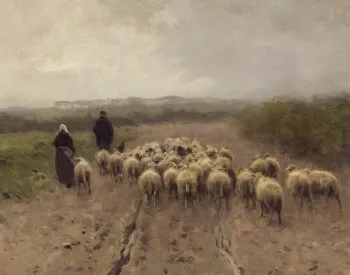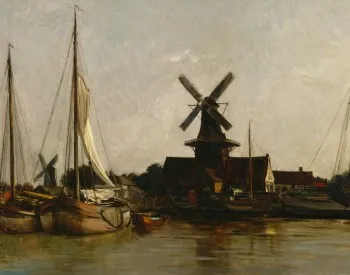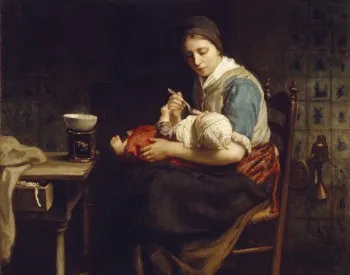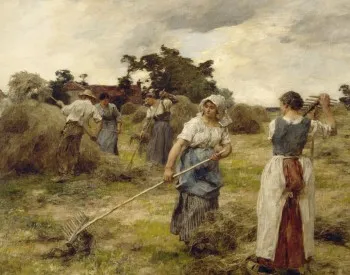Van Gogh’s Artistic Roots: The Hague School and French Realism
In conjunction with the upcoming exhibition Van Gogh in America, this focused installation presents a selection of 12 paintings and works on paper from the DIA’s collection by Dutch and French realist artists, all of whom were contemporaries of Vincent van Gogh, while several of them significantly impacted his early artistic development.
Van Gogh particularly admired the painterly innovations of the Hague School––a group named for the city in the Netherlands where its core artists lived and worked beginning about 1870. Van Gogh spent time in The Hague and knew several of these artists personally, including Anton Mauve and very likely Jozef Israëls, who especially captivated the young Van Gogh.
Mauve, Israëls, and other fellow Hague School artists explored themes that were also taken up by Van Gogh: rural landscapes with waterways, marshes, and dunes in the environs of The Hague; traditional ways of life maintained by peasant and fishing communities; and seascapes with sailboats, windmills, and canals.
Hague School artists took their inspiration from Dutch 17th-century painters and from French artists, known as Barbizon School and working in the tradition of realism, most prominently Jean-François Millet, who featured French peasant and rural themes in his work. Léon-Augustin Lhermitte followed in Millet’s footsteps and devoted his career to depicting the French countryside. Van Gogh had life-long regard for Millet and valued the work of Lhermitte––works by both artists will be included on rotating basis in the installation, which features 12 works on paper and paintings from the DIA’s permanent collection.
Exhibition:
Van Gogh’s Artistic Roots
Dates:
March 30, 2022 - February 27, 2023
Location:
In the Museum
General museum admission is FREE for residents of Wayne, Oakland, and Macomb counties.
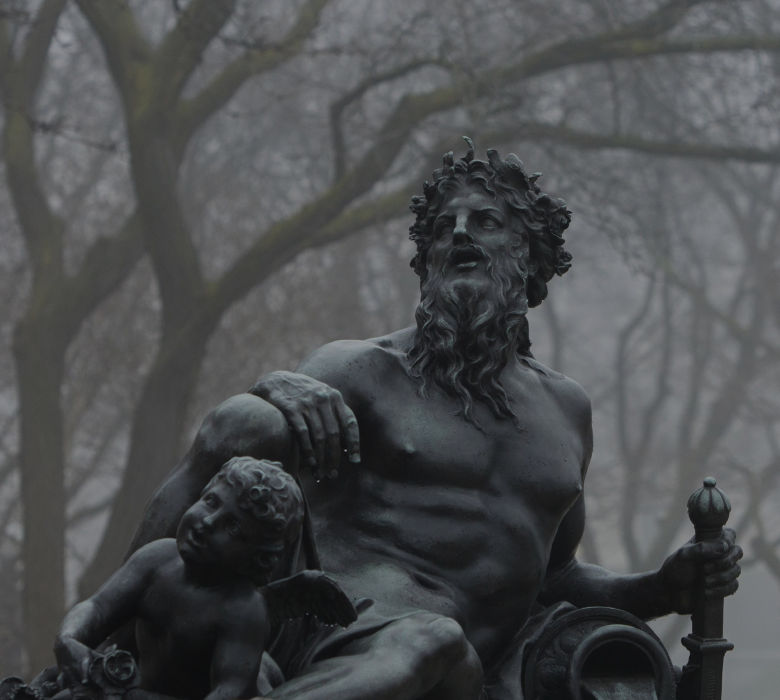

Explore Membership Options
Immerse yourself in unique history and culture and enjoy greater access, exclusive events, and more


